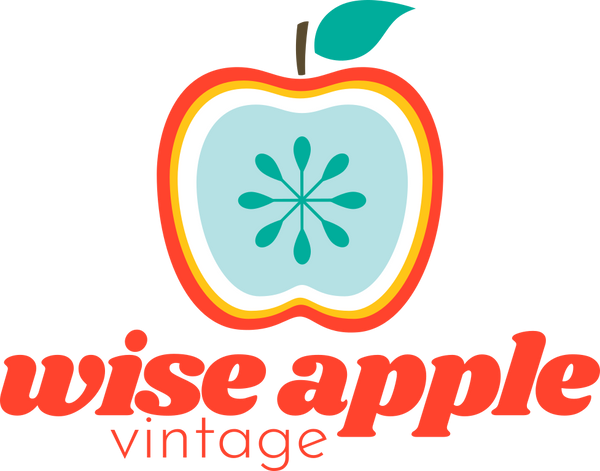 When I first began selling vintage treasures in 2008, it opened my eyes to a whole new world of vintage designers, production companies, and manufacturers. One of the first designs I was drawn to that year was the iconic lotus pattern that decorated Cathrineholm's enamelware. I had never actually seen the pattern in the 'wild', but every time I came across a piece in a magazine or blog, I swooned. About a year later I was visiting one of my favorite antique stores, and a bright yellow charger plate caught my eye from across the room. I practically ran toward it, and my eyes almost popped out of my head when I saw the $14 price tag. Needless to say, the plate came home with me, and it's still a favorite piece of mine that I have prominently displayed in my kitchen.
When I first began selling vintage treasures in 2008, it opened my eyes to a whole new world of vintage designers, production companies, and manufacturers. One of the first designs I was drawn to that year was the iconic lotus pattern that decorated Cathrineholm's enamelware. I had never actually seen the pattern in the 'wild', but every time I came across a piece in a magazine or blog, I swooned. About a year later I was visiting one of my favorite antique stores, and a bright yellow charger plate caught my eye from across the room. I practically ran toward it, and my eyes almost popped out of my head when I saw the $14 price tag. Needless to say, the plate came home with me, and it's still a favorite piece of mine that I have prominently displayed in my kitchen.

My very first piece of Cathrineholm enamelware - a bright yellow charger plate.
 Photo of Kittelsen in her fabulous mid century home. Click here for a clean but oh-so-colorful home tour over on Trendland.com
Photo of Kittelsen in her fabulous mid century home. Click here for a clean but oh-so-colorful home tour over on Trendland.com
 A favorite from my own Cathrineholm lotus collection - this turquoise enamel kettle is practically rusted through on the inside, but displays beautifully in my kitchen!
A favorite from my own Cathrineholm lotus collection - this turquoise enamel kettle is practically rusted through on the inside, but displays beautifully in my kitchen!

A rainbow of Cathrineholm plates from the Shakti Dove blog.
As Cathrineholm's lotus pattern has gained popularity over the past few years, prices have risen accordingly. For this reason, my own personal collection consists mainly of damaged pieces - a rusty sauté pan makes a great place to rally small plants, and you can't even see the big enamel chip in one of my favorite bowls so long as it's full of fruit. If you're on the lookout for a few pieces of your own, don't be afraid to think creatively - just because a piece is damaged doesn't mean you can't find good use for it! And if pristine is what you aim for, I would just advise you to be careful when purchasing online - a trusted seller with clear photos is always your best bet, as my experience has proven one seller's definition of 'perfect' may not match your own. As someone with a very critical eye, I would like to humbly suggest starting your hunt for vintage Cathrineholm in my own shop, Wise Apple Vintage. Click right here to see what's currently in stock. I hope you learned a thing or two - I know I sure did! Now get out there and go find yourself some vintage enamelware, would ya?  All above photos are my own, unless specifically noted otherwise. Information for this post was obtained here, here, and here.
All above photos are my own, unless specifically noted otherwise. Information for this post was obtained here, here, and here.
 All above photos are my own, unless specifically noted otherwise. Information for this post was obtained here, here, and here.
All above photos are my own, unless specifically noted otherwise. Information for this post was obtained here, here, and here. One last shot of the plate that started my collection - a sunny yellow enamel charger plate.
One last shot of the plate that started my collection - a sunny yellow enamel charger plate.


